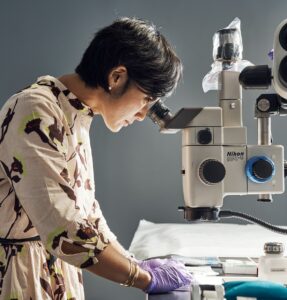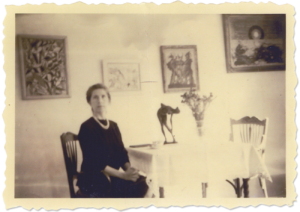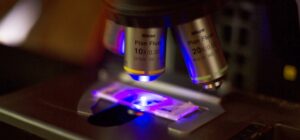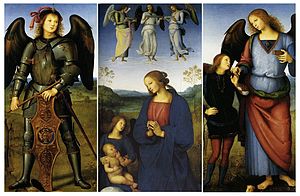Resolving Questions of Provenance with Scientific Analysis: Provenance Series (Part VII)
Provenance is important for all objects of artistic or cultural significance, and scientific studies can support or oppose conclusions about a work’s history. Scientific research is commonly conducted to address questions about an object’s history, attribution, condition, or materials of manufacture. The potential of scientific analysis for provenance research is just being recognized, even though science has been used to study cultural heritage for over a century; scientific investigations in the context of art started in nineteenth-century laboratories established at the Rathgen Laboratory in Berlin and the National Gallery in London.
ANACHRONISMS
 One of the things that scientific study does best is to reveal anachronistic materials or technologies. Anachronistic elements are materials or technologies that were not available when the work was purported to have been produced, and thus these elements can have several implications. Most often, anachronisms can reveal that a work was not created at the time that it was purported to have been made.
One of the things that scientific study does best is to reveal anachronistic materials or technologies. Anachronistic elements are materials or technologies that were not available when the work was purported to have been produced, and thus these elements can have several implications. Most often, anachronisms can reveal that a work was not created at the time that it was purported to have been made.
A work may have been created in the style of the artist or as a copy (possibly made decades or centuries after the original). Some findings reveal works that have been produced with the specific intent to deceive, while others were not created with malicious intent. Provenance enters this discussion frequently, since it is possible (and even common) that a work revealed by scientific study to be a later copy was originally prepared to be exactly that. The work subsequently enters the art market with its original provenance either lost or deliberately obfuscated. Such works erroneously become unexpected ‘finds.’ For example, sometimes a work descends within a family and the original history of the work is lost. Alternately, objects with broken provenances wind up in a local dealer’s shop through estate sales. In this way, a work that was never intended to deceive enters the art market with a mistaken attribution and gaps in its provenance.
Some types of artwork are more susceptible to loss of provenance than others. The provenances of antiquities are almost never complete unless the object moves straight from an archaeological excavation to an art museum, and then is later deaccessioned by the museum. Outside of this scenario, the possibility of antiquities reaching the art market with a complete and intact provenance is exceedingly low. Antiquities collections assembled from the Renaissance through the nineteenth century can be found throughout Europe, but records for works within those collections are highly variable (luckily, with a keen eye, collectors’ marks can occasionally be found). This represents a minor problem, however, when compared to illegally looted cultural items that reach the art market after being smuggled out if their countries of origin. Such works are subsequently given an invented provenance, typically with seemingly complete (but false) documentation.
PHYSICAL RECORD
The physical record of an object’s provenance includes gallery labels, collector’s stamps, historic photographs, sales receipts, certificates of authenticity, museum exhibition catalogues, and auction catalogues. Correspondence between a dealer and collector, between an auction house and collector, and probate inventories can also be illuminating. Some of the most valuable provenance information can come from correspondence between the artist and the collector. Even guest books from an artist’s home are requested as supporting evidence that a piece descended in a family belonged to a family member known to the artist. While such documentation was once considered definitive proof of ownership, there have been numerous examples of false documentation created to invent the appearance of a plausible provenance for a fake object (as in the case of Michigan art dealer Eric Ian Hornak Spoutz).

Helene Beltracchi posing as her late grandmother
Now infamous for his clever forgery scheme, Wolfgang Beltracchi used his wife to imitate her grandmother in black-and-white photographs purported to be period images of works that were actually recent forgeries. The British team of John Drewe (seller) and John Myatt (forger) ‘spiked’ British archives with false documents to create provenances for forgeries so that researchers would fall upon the falsified information and believe in the veracity of forged works. To successful create this archival information, Drewe accessed stationary from London’s Institute of Contemporary Arts, and wrote to the artists’ families requesting letters of authentication. Finally, he inserted false documents into the archives of numerous English institutions, including the Tate Gallery.
SCIENTIFIC TESTING
Scientific testing plays a role in verifying the paper trail that should accompany artworks. Knowledge of the history of photographic processes, photographic papers, paper fiber distributions, paper fillers, optical brighteners, and ink compositions is critical for a successful scientific examination. False paper labels and documents are also major problems in the antique furniture market and in the trade of rare and valued violins such as those crafted by Stradivarius.
Many commonly employed scientific tools can be applied to examining cultural materials. From the most low-tech to the more sophisticated instrumental methods, these tools may play important roles. A high-powered visible light source and even a relatively low magnification lens can reveal that a work has been substantially changed or is not what it purports to be (altered signatures are commonly revealed in this manner). Even taking exact measurements of a work is critical, as these can change substantially over time, sometimes intentionally to obscure the history of a work that has been stolen or looted. It is important to examine not just the presentation surface of the object, but the underside or verso, as well. Scientists document every label and marking and any materials that appear not to be original. The careful and systematic documentation of objects on the art market is overlooked with shocking frequency. It is important to systematically study both the object and each document that is presented with the object as part of its provenance.
 Different wavelengths of the electromagnetic spectrum can also be used to study a work holistically. This includes using long-wave ultraviolet light to examine the characteristic fluorescence of the artists’ materials. Information about the papers and inks on any labels or stamps on the piece can be further studied in this manner. Watermarks on paper documents can be studied by x-radiography as well as transmitted light imaging.
Different wavelengths of the electromagnetic spectrum can also be used to study a work holistically. This includes using long-wave ultraviolet light to examine the characteristic fluorescence of the artists’ materials. Information about the papers and inks on any labels or stamps on the piece can be further studied in this manner. Watermarks on paper documents can be studied by x-radiography as well as transmitted light imaging.
Multispectral and hyperspectral imaging techniques can greatly assist in making faded, illegible, or even intentionally erased signatures visible on documents, making these tools ideal for studying the physical record of provenance. Multispectral imaging uses filters to extract different “slices” of the infrared and visible regions of the electromagnetic spectrum, allowing one to recover information not obtainable using traditional illumination. X-ray fluorescence, an elemental analysis technique, can be used to compare the inks used on paper labels and in stamps applied to official documents and letters. Similarly, Raman spectroscopy, a molecular analysis tool, can be used to identify inks. A second molecular analysis technique, Fourier transform infrared spectroscopy (FTIR), is an excellent method for identifying inappropriate binding media in inks, such as the use of an acrylic resin where a drying oil-based formulation is expected.
ALTERED (AND “ALTARED”) WORKS
Science enters the discussion of a work’s provenance when there are questions about whether a work being studied is in fact the same object that was described, photographed, or drawn in an earlier decade or century. The appearance of an object of art can change dramatically over its lifetime, particularly when the piece is an antiquity that has survived for centuries or millennia. When this happens, debate occurs about how a work in its current condition relates to historic descriptions of the piece. If a positive identification cannot be made, then the provenance ascribed to the work may be incorrect.

3 of the 6 panels from the Altarpiece of Certosa, painted by Perugino.
One observable change in paintings is when a large-scale work is cut and sold as two or more smaller scale works. Intensive provenance and scientific research are needed to identify and reunite such fragments. While the dimensions of a stolen painting are commonly reported, it is not unusual for canvases to be trimmed several times throughout their lifetimes, sometimes during a reframing and other times for the express purpose of disguising the identity of the work to re-introduce it to the art market with an invented provenance. The absence of tacking margins on a painting makes it impossible to know if the current dimensions of the work represent its original dimensions. Double-sided paintings on panel, especially altarpieces, can be split through their wood cores and then introduced to the art market as two original works with a concomitant loss of provenance. Paintings from royal collections can have their provenances altered or obfuscated when their coats of arms are painted over, or entirely new coats of arms can be added to the original painting as the painting changes hands.
In the case of porcelain, changes are sometimes made to wares to give them new provenances that will increase their market value. Examples include Chinese export porcelain, which has a history of modification throughout the 20th century. Early 19th century table wares with period borders would be purchased inexpensively, and then important armorial decorations would be added to provide a false provenance and increased historical importance for the pieces. Foliate decorations or ciphers are etched off the surface of a table ware with acid, and the original decoration of a piece is replaced with a different, more rare and valuable, fired-on decoration to give the piece a more important provenance. These later additions can often be detected using x-ray fluorescence, since the overglaze enamels typically contain colorants or fluxes that are not appropriate to the purported dates of production.
Likewise, the documentation paper trail that constitutes a provenance is becoming a rich area for scientific study. As databases of stamp and label inks, papers, optical brighteners, and paper fillers continue to grow, the possibility of creating a false provenance on paper will become increasingly difficult. Scientists face the constant challenge to stay one step ahead of forgers, of which invented provenance is only one of the most recent. However, a commitment to objective and rigorous examination and technological innovation can keep us at the forefront of protecting the legacy of our global cultural patrimony.

